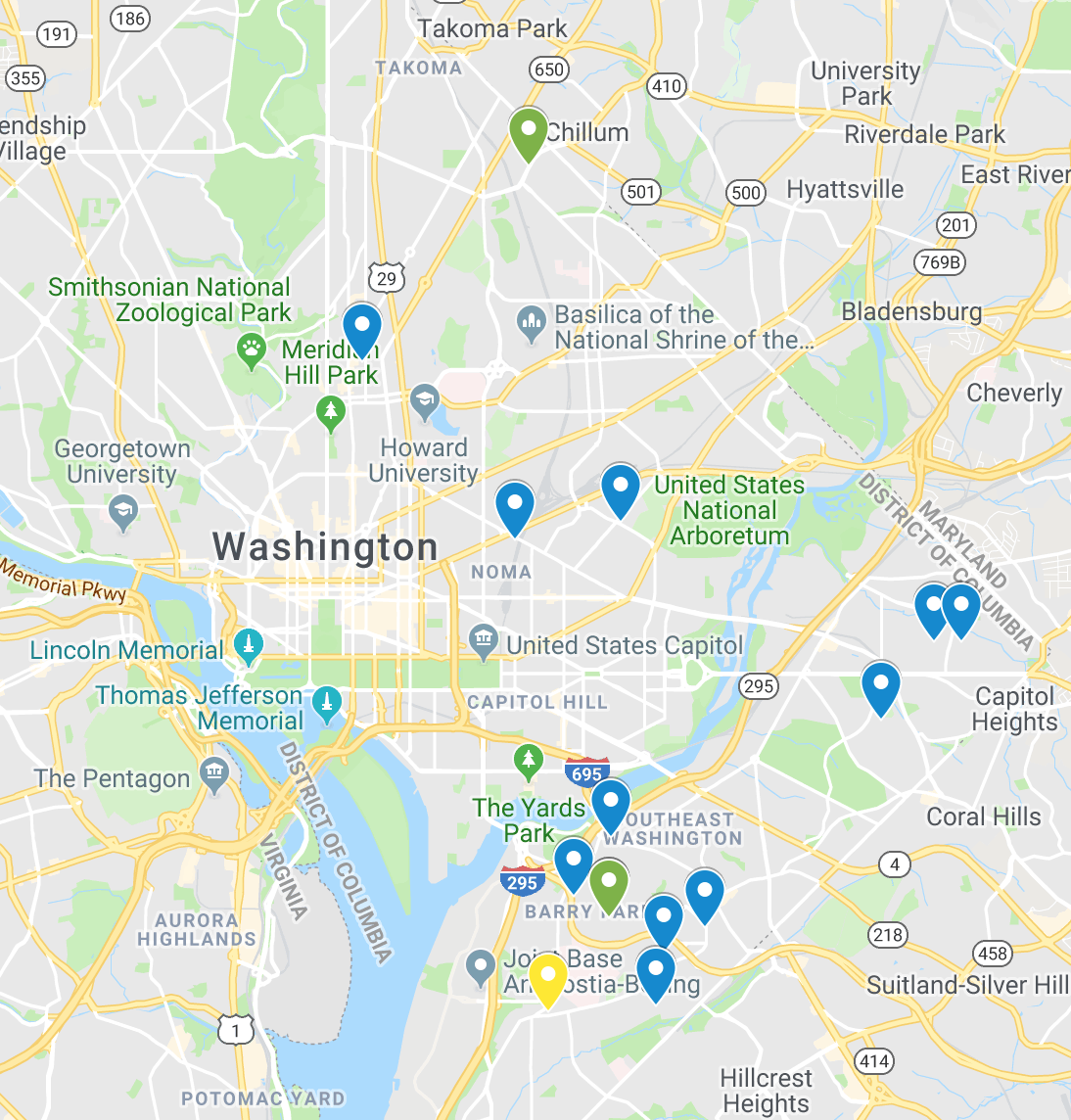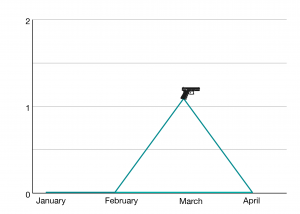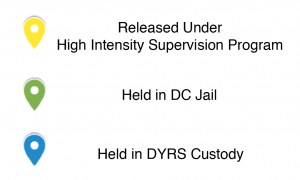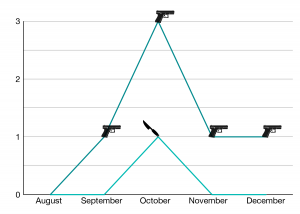
Thank you for reading D.C. Witness. Help us continue our mission into 2024.
Donate NowBy
D.C. Witness Staff
- May 15, 2019
Featured
|
Homicides
|
Infographics
|
Juveniles
|
Policy
|
Suspects
|
Victims
|
Nearly two weeks into February, the mother of a 16-year-old murder victim stood before a crowded courtroom inside the H. Carl Moultrie Courthouse and reminisced about her daughter. She told the court that the system failed her for a range of reasons, including when it allowed the person responsible for her daughter’s death to be placed in a juvenile facility.

Dekale Bowman

Taiyania Thompson
In February, Dekale Bowman, 19, pleaded guilty and was sentenced to nearly 10 years in prison for shooting his 16-year-old girlfriend, Taiyania Thompson in January of 2018.
“Bowman is a threat to himself and society,” Thompson’s mother said.
Pursuant to the Comprehensive Youth Justice Amendment Act of 2016, under Chapter 23 of Title 16 of the Code of the District of Columbia, DC Jail transferred all Title 16 youth or youth age 16 or older who were charged as adults to juvenile facilities. The mandate went into effect on Oct. 1, 2018.
The regulation shift is part of a nationwide reform to comply with the Juvenile Justice Reform Act of 2018, according to Marcy Mistrett, chief executive officer of Campaign for Youth, a nation-wide initiative that advocates to end youths being charged, sentenced and incarcerated as adults.
The policy, enacted on Dec. 21, mandates that states place juveniles charged as adults in juvenile facilities. While the country has three years to comply with the statute, Mistrett said multiple states have already implemented the change or have such legislation pending.
One of the purposes of the legislation is to “reauthorize and improve” the Juvenile Justice and Delinquency Prevention Act of 1974, which sought to “prevent delinquency and improve the juvenile justice system,” as stated by the U.S. Department of Justice.
Bowman, who was 18 years old at the time of his arrest, was transferred to New Beginnings, a Maryland based juvenile facility, prior to the legislation’s implementation in March of 2018 after his attorney made arguments that weren’t disclosed in open court.
Two months later, in May, Bowman was transferred back to DC Jail. D.C. Witness previously reported that a prosecutor said Bowman got into an altercation with a juvenile at New Beginnings and broke the juvenile’s jaw.

Between January of 2019 and April of 2019, one juvenile suspect was arrested and charged in connection to a DC homicide.
According to D.C. Witness data, there were 15 defendants who were arrested when they were 17 or younger between Jan. 1, 2018, and April 30 in connection to a DC homicide. Pursuant to recent legislation, the Department of Youth Services (DYRS) has custody of 12 of the 15 defendants.
Of the 12 who are in DYRS custody, nine are charged as adults. The remaining three juvenile defendants, who are not charged as adults, are being tried in family court.
Of the three defendants who are not being held in DYRS, Elijah Jarmon, who turned 18 in October, was removed from New Beginnings and placed at DC Jail. In February, D.C. Witness previously reported that Judge Danya Dayson said the law was clear and ordered Jarmon’s removal from the juvenile facility because he aged out of the system. Jarmon is charged with first-degree murder while armed for his alleged role in the death of 18-year-old Taquan Pinkney on the 2800 block of Stanton Road, SE in 2018.
Another defendant, Shelby Jones, who is being held in DC Jail was arrested when he was 17 years old, prior to the legislation change in April of 2018. Jones, who turned 18 in July of 2018, has remained in DC Jail throughout the entirety of his case.
The remaining juvenile who is not placed in DYRS custody was released under the high intensity supervision program (HISP).
According to Akeyah Dickson, DYRS public information officer, juveniles within DYRS custody are placed in one of two facilities, including New Beginnings, a Maryland-based juvenile facility that opened in May 2009, or the Youth Services Center (YSC), a juvenile facility and alternative school based in Northeast DC. According to YSC personnel, the facility has been open since the 1950s; however, D.C. Witness was not able to confirm the date with DYRS.

While DC Courts does not disclose the location of juveniles for security concerns, among other reasons, D.C. Witness data shows that multiple defense attorneys have argued, in open court, for their client to be placed in the New Beginnings facility. As stated in DC Courts, a defense attorney on behalf of Titus Iracks, 17, requested that his client be placed in DYRS in July of 2018.
According to D.C. Witness data, three of the juveniles who are charged as adults, who are currently being housed at DYRS, even though they have surpassed their 18th birthday. Meanwhile, following his 18th birthday, Jarmon was transferred from DYRS custody to DC Jail.
When asked to comment on the inconsistency of placing defendants in DC Jail after their 18th birthdays, the United States Attorney’s Office of the District of the Columbia declined. Furthermore, the Public Defender Service declined to comment on whether or not they’ve noticed a trend.
When faced with the inconsistency, Mistrett said it’s likely the prosecutors think the charges will lead to dismissal or amount to a sentence of time served. She said it’s also possible the prosecution didn’t realize the juvenile turned 18.
D.C. Witness reached out to the Department of Youth Rehabilitation Services (DYRS) to inquire about incidents rates for youth held at New Beginnings. D.C. Witness also inquired about the training provided to staff so they could better serve the incoming Title 16 population. As of April 30, DYRS has not responded to the inquiries.
However, according to a May 2018 DC Council Committee Budget Report, DYRS employees have said they were apprehensive that DYRS had not “fully prepared” them for the incoming Title 16 youth. The report made a point to note that the security staff had concerns.
The map above pinpoints the location of the homicides that DC juveniles have been arrested charged in between Jan. 1, 2018 and April 30.
 The report also states that staff believed there was a lack of communication from superiors concerning where Title 16 youth were going to be placed and whether they would be able to “intermingle” with the general population at New Beginnings.
The report also states that staff believed there was a lack of communication from superiors concerning where Title 16 youth were going to be placed and whether they would be able to “intermingle” with the general population at New Beginnings.
According to the report, which was issued on May 3, 2018, DC Councilmember and chairperson of the Committee on Human Services Brianne Nadeau concluded that the committee was “concerned that not all staff members feel fully prepared to receive Title 16 Youth.”
The report also notes the DYRS staff began targeted training to “ensure they are able to securely manage and address the perception that Title 16 youth are more dangerous or physically aggressive than the current population of youth that they manage.”

Between August of 2018 and December of 2018 seven juveniles suspects were arrested and charged in connection to a DC homicide.
“The additional group of kids is always a little bit harder because they’ve experienced one facility and now you’re moving them to a different facility,” Mistrett, the CEO of Campaign for Youth, said. “ So there is usually an adjustment period with kids where they’re retesting boundaries, seeing where the rules are, seeing where the line in the sand is as typically adolescents do.”
Mistrett, who is involved and familiar with New Beginnings and DYRS, said the juvenile facility instituted a higher staff ratio, acknowledging that the incoming youth would be a transition for the facility. However, Mistrett said the higher ratio was only requested during the transition period.
In response to the notion that Title 16 youth are in some way especially “aggressive,” Mistrett noted that there will be reports of fights in a juvenile facility but within context the instances of violence are minor.
“We can always focus on the outliers, the one bad situation,” Mistrett said. “ I think (DYRS) was pretty clear that the first week or two the kids were testing. There was some pushing and shoving, there were some fights but they got it under control.”
Mistrett, who advocated for the Comprehensive Youth Amendment, said the impact adult facilities have on juveniles was a large portion of her efforts to push legislation for all juveniles, charged as adults and otherwise, to be held in juvenile facilities.
“It’s awful. There have been studies on this time and time again that minors that go into adult facilities, jail or prison, are subject to much higher rates of sexual assault and abuse… higher rates of suicide, less access to families and any sort of support services,” she said.

Between March of 2018 and July of 2018 seven juveniles suspects were arrested and charged in connection to a DC homicide.
Mistrett also points to a report issued by The Ridley Group and Associates, a private consulting group that went into DC Jail for a three month period beginning in April 2013. The organization took note of the conditions juveniles underwent and offered recommendations to improve the facility.
The report detailed various problematic areas including, juveniles being served breakfast at 3 o’clock in the morning, a lack of college programs and “insufficient” programming. The report also took juveniles and staff’s account of the facility into consideration. Some of the juveniles complained of not being able to have face-to-face contact with their families and instead of having to do “video visitation.”
According to Mistrett, following the release of the report, there were shifts in the programming as well as overall policies in the facility. Overall, Mistrett said there has been positive growth in juvenile justice. Beginning with the juveniles being moved to their own section of adult facilities in the early 2000s and then moved to their own facilities and eventually to gain better programming.
While progress has been made, Mistrett noted that there is still much to be done.
“(The juveniles) said a lot of people come here to collect a paycheck but at least here you can find somebody who cares about you,” she said summarizing the account of a minor currently housed in a juvenile facility.
Follow this case